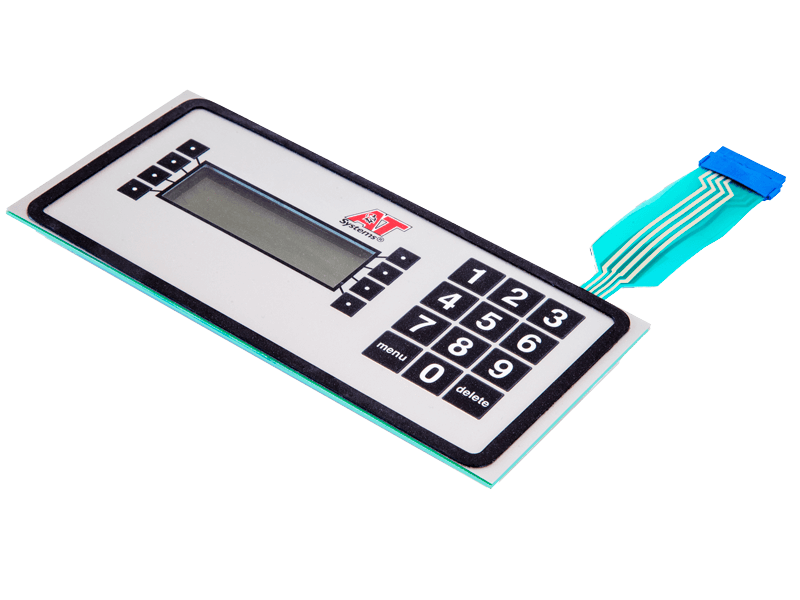Recognizing Membrane Layer Switches: The Trick to Sturdy and Trusted Controls
Membrane switches over represent a crucial facet of modern user interface design, mixing performance with resilience in numerous applications. As we discover the details of membrane layer buttons, it ends up being clear that their role in improving control systems is both profound and intricate, increasing questions concerning exactly how best to take advantage of their capabilities in future technologies.
What Are Membrane Buttons?
Membrane layer buttons are an innovative solution in the realm of interface innovation, integrating functionality and layout seamlessly. These gadgets offer as an interface in between users and digital systems, incorporating a number of parts into a portable style. Typically built from adaptable, slim layers of materials, membrane layer switches are created to reply to touch, enabling users to interact with equipment and electronic tools effectively.
The primary components of a membrane layer button consist of a printed circuit layer, visuals overlay, and a spacer layer that prevents unintended activation. The visuals overlay can be personalized to mirror brand identification or individual preferences, enhancing appearances while guaranteeing usability. Membrane switches are frequently made use of in various applications, consisting of clinical gadgets, customer electronic devices, and commercial equipment, owing to their resilience and resistance to environmental aspects such as wetness and dirt.
Among the crucial benefits of membrane switches is their ability to hold up against damage, making them suitable for high-traffic atmospheres. Furthermore, they are lightweight and call for very little space, enabling cutting-edge styles in product growth. In general, membrane layer changes represent a sensible and effective choice for modern-day electronic user interfaces, marrying technology with user-centric style principles.

How Membrane Switches Work
The operation of membrane switches over joints on a straightforward yet effective device that equates user input right into electronic signals. When a user presses the button, the top layer warps, allowing a conductive component in the circuit layer to make contact with a corresponding conductive pad on the underside of the visuals overlay.
The design of membrane buttons can differ, however they commonly integrate domes or tactile components to offer comments to the user, boosting the overall experience. The products utilized in membrane buttons, such as polyester or polycarbonate, add to their toughness and resistance to ecological aspects, including wetness and dust. Additionally, the printed circuits are generally encapsulated, which protects them from deterioration in time.

Benefits of Membrane Buttons
One of the key advantages of membrane buttons is their flexibility in style, allowing them to be tailored to satisfy particular customer requirements and aesthetic requirements. This flexibility includes numerous markets, where different forms, dimensions, and colors can be used to enhance user interaction and visual charm.
Additionally, membrane layer buttons are understood for their toughness. Constructed from durable materials, they are immune to dust, wetness, and physical wear, which considerably prolongs their life expectancy compared to typical mechanical switches. This longevity makes them especially ideal for high-traffic environments and applications needing longevity.

Furthermore, membrane buttons provide a streamlined account, resulting in a thinner design that can be incorporated into various tools without including mass. This function not just enhances the aesthetic allure however additionally adds to an extra ergonomic item layout.

Applications of Membrane Layer Buttons
User-friendly and flexible, membrane switches find applications across a vast array of industries, including clinical tools, consumer electronics, and commercial tools. In the medical field, these buttons are essential to tools such as diagnostic devices, patient surveillance systems, and infusion pumps, where integrity and ease of cleansing are important. Their ability to maintain and hold up against extreme settings functionality makes them ideal for such applications.
In consumer have a peek here electronic devices, membrane buttons are made use of in products like microwaves, washing devices, and push-button controls - membrane switch. Their sleek style permits for intuitive interface, enhancing the general individual experience while giving longevity and resistance to tear and use
Commercial devices additionally takes advantage of membrane buttons, especially in control panels for machinery and automation systems. These switches supply security against dust and dampness, ensuring consistent efficiency in challenging atmospheres. In addition, their personalized features enable Learn More Here makers to tailor them to particular operational demands, improving effectiveness and functionality.
Selecting the Right Membrane Switch
When choosing a membrane button, it is vital to consider numerous aspects that influence efficiency and suitability for certain applications. The key factors to consider include ecological problems, tactile responses, toughness, and design specs.
First, assess the operating environment; switches revealed to moisture, chemicals, or severe temperature levels need details materials to make sure long life and functionality. Next, review the need for tactile comments. Relying on user interaction, some applications might take advantage of a responsive reaction to verify activation, while others might prefer a non-tactile layout for aesthetic reasons.
Toughness is another vital variable; membrane layer buttons need to be designed to endure regular usage, effects, and abrasion. Make certain the picked button can endure the expected lifecycle, particularly in high-usage scenarios.
Final Thought
In final thought, membrane switches over serve as essential elements in the design of dependable and resilient control systems throughout different industries. The convenience of membrane layer switches over allows for tailored solutions that fulfill particular functional needs, enhancing their importance in contemporary technology.
Membrane layer switches represent a critical aspect of contemporary interface style, mixing performance with strength in various applications.Membrane layer switches are an advanced solution in the realm of customer interface innovation, incorporating functionality and layout perfectly. Typically built from adaptable, thin layers of products, membrane layer switches are created to react to touch, enabling individuals to connect with machinery and digital gadgets effectively.
The style of membrane buttons can vary, yet they often include domes or responsive components to provide comments to the individual, boosting the overall experience.In verdict, membrane changes offer as important dig this parts in the design of sturdy and reliable control systems throughout various markets.